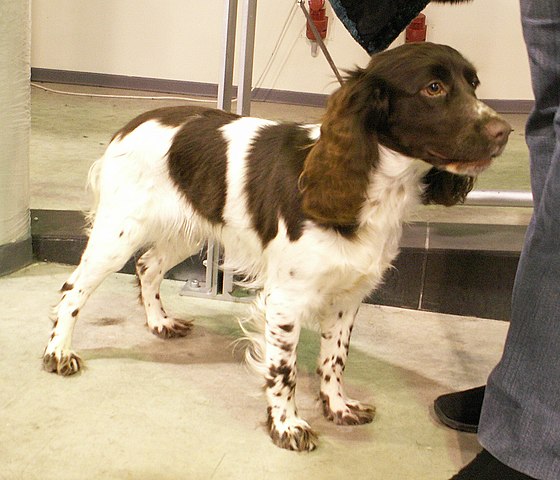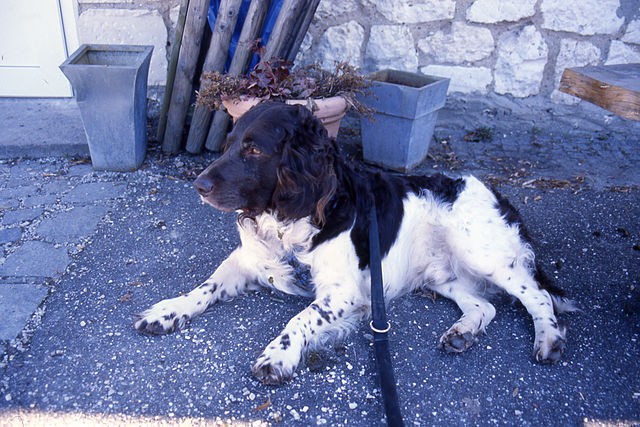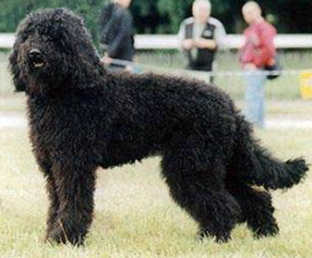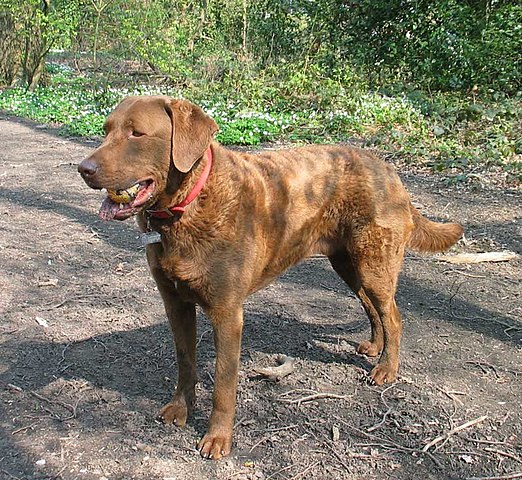The Polish Hunting Spaniel is an all-terrain flushing dog that also excels at tracking and retrieving. Back in the 1800’s, much was written in Poland about various spaniel breed being imported and bred together on purpose, primarily by the wealthy. The main breeds being crossed were English Springers, Cockers, Field and Sussex. When war erupted, many of these dogs died or were taken to Russia and the population in Poland was substantially reduced. However, this once-ancient breed was recreated somewhat recently by a man named Dr Andrzej Krzywiński – a genetic scientist. In the 1980’s he reestablished the breeding program, primarily basing his goal on old pictures of this breed and knowledge of the original blending of breeds. Today this spaniel is recognized in over 20 countries and well over 2,000 dogs have been born since 2017 (as of this writing). This said, they are still considered very rare and have yet to be recognized in the United States.
Breeders of Hunting Spaniels take their job very seriously, and it is important to the club that the breed stays healthy as the population grows. There is a breeding committee that oversees the program made up of experienced vets and judges, and the club is also working with researchers on the genetics of the breed. A large database is available to help breeders make informed decisions about pedigrees and the health of the dogs in those pedigrees. Along with health test results, the database also includes a COI to calculate the inbreeding coefficient, a kinship ratio, and an ancestor loss ratio. At this time, the studbook for the breed is not closed which means that careful outcrossing with other breeds is still allowed to take place to grow the gene pool. So far the hard work is paying off as there are currently no health issues that are associated with this spaniel!
The PSM (abbreviated from his Polish name – Polski Spaniel Mysliwski) is a hunting dog through and through and has many temperament traits that reflect the ability to do this job. Intelligence is required to work fluidly with the hunter, willpower to work through the often-difficult obstacles of a hunt, and bravery to face whatever might come charging through the brush. This breed can make quick decisions when needed and has a strong prey drive, compelling him to take chase at the drop of a hat. Add in an amazing sense of smell and one can see this dog was built to do his job. As with most hunting spaniels he needs opportunities to… well, hunt! His owner should enjoy the outdoors just as much as him and should be prepared to offer him a lot of exercise, regardless of bad weather. This is an active dog with a ton of stamina that won’t be happy sitting on the couch all day.
When given enough physical and mental stimulation the Polish Hunting Spaniel is an amazing and loyal pet. He is very affectionate with his family and social to strangers once he gets to know them a bit. He does well with kids although is a bit too active for the toddler-age. When raised correctly he should have a balanced and easy temperament to deal with, and is usually quite biddable and agreeable. The PSM does like to bark and in fact can make an excellent watch dog because of this ability, but is not a guard dog. Finally, he will develop a deep bond with his owner throughout his life and often is a “velcro” dog – a shadow that follows his owner from room to room. He lives for attention and affection so he would be a poor choice for someone who spends most of the day at work.
Hunting Spaniels tend to be fantastic prospects for dog sports as they are usually game for anything! Scent work, conformation and agility are just a couple of sports that members of this breed already compete in but they have the potential to do just about any task. And unlike some of the more active “sport breeds”, they are calmer and generally easier to live with at home while maintaining a lively, happy nature. They have enthusiasm but it’s not a frantic energy that won’t settle down until it’s focused in a certain direction. Instead, they are ready and willing to work but do have an off-switch. They mostly just want to work in order to spend more time with their favorite human, which makes them excellent candidates for obedience. Take note – this intelligent breed DOES need training and plenty of mental stimulation so isn’t a good match for a person who isn’t interested in regular training sessions.
The Polish Hunting Spaniel is not a good breed for a first-time dog owner because of his high exercise requirements – a minimum of an hour a day is required. In addition he keeps an elevated energy level throughout most of his life which is hard for most inexperienced owners. Like most active breeds that aren’t given enough physical exercise, if he isn’t given enough he can become bored, destructive and loud! Owners should plan on providing him with a variety of physical tasks such as jogs, swimming sessions, very long walks, and challenging hikes. Along with this he also needs daily mental stimulation in the form of training sessions or games which can also engage his mind.

Photo By Nancy PSM









